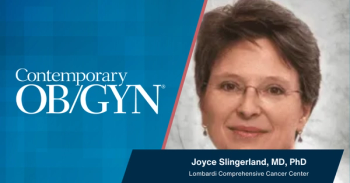
Breast Cancer and Hormone Replacement Therapy
The relationship of sex hormones and breast cancer is a matter of concern of many women. Breast cancer is the most common form of cancer in women in industrialized countries.
The relationship of sex hormones and breast cancer is a matter of concern of many women. Breast cancer is the most common form of cancer in women in industrialized countries. Approximately one in every 10-12 women develops this disease during her course of life, sometimes before menopause (25%), but mostly after menopause. Many studies with conflicting results have investigated the relation between hormone replacement therapy (HRT) and breast cancer. The overall opinion was very confusing and publications in lay press underlined more often the studies that published an increase in risk than studies with less spectacular results. During 1997 a excellent paper was published that combined all earlier studies, but the paper contains an enormous amount of data and is very difficult to read even for doctors. This contribution to OBGYN.net describes what really is known about the risk of breast cancer
The authors have carefully searched the literature for all studies concerning the relation between risk of breast cancer and HRT. They included all studies with at least 100 women with breast cancer and clear information on the use of HRT and on other factors related to reproduction and the menopause. They were rather successful and they give details on 63 eligible studies. Thereafter, the authors have retrieved all original data of those 63 studies. Unfortunately, for ten studies original data were not available anymore and one group with 2 studies declined collaboration. Ultimately, detailed information was available from 51 studies of 52705 women with breast cancer and 108411 women without breast cancer.
This enormous amount of data is described in the paper in The Lancet, but only experts with a thorough knowledge of epidemiology and statistics can read it easily. So is the cumulative incidence of breast cancer increasing with age, but at the same time the relative risk decreases with time since menopause. Furthermore, many variables are interdependent.
To calculate the risk of HRT, the authors have constructed a model with all other factors constant. In this model age at menopause is set on 50 years and the cumulative incidence of breast cancer is calculated for women never using HRT and for women using 5 or 10 or 15 years of HRT.
The results are demonstrated in the figure.
On age 45 already 10 of 1000 women have acquired breast cancer and at the estimated age of menopause (=50 years) this number increased to 18. Without use of HRT 77 of every 1000 women will have diagnosed with breast cancer on age 75 and probably more of them when they become older. This number of breast cancers is represented in the figure with the blue line: the incidence without any exogenous hormonal influence.
With the use of HRT during 5 years, from 50 to 55 years, there is a very small increase in the calculated incidence of 2 extra breast cancers in 1000 women using HRT during this 5 years: 40 women with breast cancer on the age of 60 years instead of 38 (red line in the figure). But this difference is statistically not significant: this means that there is no real difference in the number of diagnosed breast cancers in 1000 women never using HRT and in 1000 women using HRT during 5 years. So, short term use has no breast cancer risk.
With longer duration of HRT also the number of breast cancers increases. Ten years of HRT (from 50-60 years) result in the extra diagnosis of breast cancer in 6 out of 1000 women in this group (green line in the figure). Without HRT 77 cases of breast cancer will be diagnosed in 1000 women, and with 10 years of HRT this number will be 83.
With 15 years duration of HRT the yellow line in the figure has to be followed. And this ends with an excess of 12 women more with breast cancer at age 75 than without HRT: 89 per 1000 women instead of 77 per 1000.
Do these data prove that HRT causes breast cancer? No, because this kind of research can only demonstrate that a relation exists, but not if this relation is causal. The possibility of better surveillance, more frequent palpation of the breasts, more mammographies in HRT-users as consumers more concerned with their health than never-users still exists. An argument for this so called healthier user effect is the observation that breast cancer diagnosed in HRT users is often more localised and has a better prognosis. This problem will only be solved by randomised trials. Such research is on-going: the Women’s Health Initiative. But the first results are not available before the year 2006. In the meantime, it is prudent to consider the small increase in number of breast cancers in HRT-users as a unwanted side-effect. On this moment most medical professionals have the opinion that breast cancer is not caused by oestrogens. In fact, the lesion starts as early as the second or third decade of life. But oestrogens can definitely promote the growth of an existing small breast cancer.
There are several other conclusions to drawn from the paper in the Lancet.
The central hypothesis of the model described above is an age at menopause of 50 years. But the authors have also calculated the number of women with breast cancer with a menopause at age 55. These women have endogenous production of oestrogens during 5 years more than women with menopause at age 50. Comparing both models, one can conclude that one has to calculate not only the duration of use of HRT, but the total number of years with endogenous and exogenous oestrogens together. So, women with menopause at age 55 have the same number of breast cancer with 10 years of HRT use as women with menopause at age 50 and 15 years of use of HRT. This is good news for women with an early menopause. The length of use of HRT in terms of breast cancer has to be calculated from age 50 and not from their earlier start: only the total number of years of endogenous and exogenous oestrogens count.
The small increase in the incidence of breast cancer in long-term users of HRT should be considered in the context of the benefits of HRT. Long-term use is indicated for the prevention of serious disorders as osteoporosis and cardiovascular disease (and perhaps also useful in the prevention of dementia). Only in women without any risk factor for these diseases and especially for cardiovascular disease, the excess of breast cancer is of real importance in terms of cost-benfit calculations. But for some women a small increase in the incidence of breast cancer is so terrifying, that they accept the probability of an earlier (premature) cardiovascular death.
Newsletter
Get the latest clinical updates, case studies, and expert commentary in obstetric and gynecologic care. Sign up now to stay informed.










